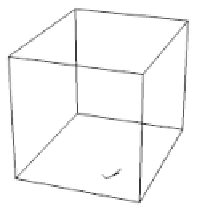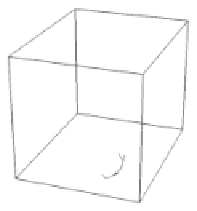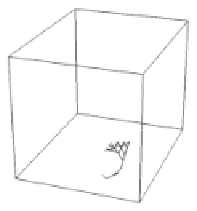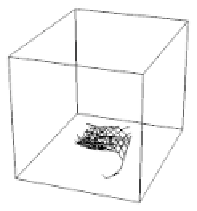Information Technology Reference
In-Depth Information
The cells are subdivided in 9 subcells, each one representing one of the eight robot
orientations and movement directions. Each subcell has a grey level, ranging from
white (all moves admissible) to black (no move). The middle cell is black iff all
the moves are not admissible, white otherwise. The planner will try to find the
shortest trajectories that connect the starting cell to the goal cell exploiting
exclusively the admissible moves in each passing cell.
3.3 Attraction to Goal Layer
This is the core of the entire Path-Planning Algorithm. The
Attraction to Goal
Layer
is defined as:
Attr
c
(
d
out
)
∈
N
8
. It is a vector of eight values corresponding
to the eight main directions. It represents the integer distance of the cell c from
the goal cell if the robot moves to the
d
out
∈ D
direction along a collision-
free path. It is a digitalized representation of the
C−Potential
function
U
(
q
)
defined on the
C−Space Bitmap
. To evaluate the path length, we have introduced
a set of costs (weights) for each robot movement: (
forward, forward diagonal,
direction change, stop, rotation, backward, backward diagonal
). It is not a metric
a) 2 steps
b) 4 steps
c) 6 steps
d) 8 steps
e) 10 steps
f) 40 steps
Fig. 4.
Attraction Potentials Skeletons at different evolution steps
in the mathematical sense: it has been called in such a way because it defines
a method to evaluate the trajectory length. The robot is subjected to non-
holonomic constraints, therefore not every movement can be done in every robot
pose. We have introduced a subset of admissible moving directions
D
(
c,d
)
⊆ D
depending on the robot position (cell
c
) and orientation
d
which satisfy the











